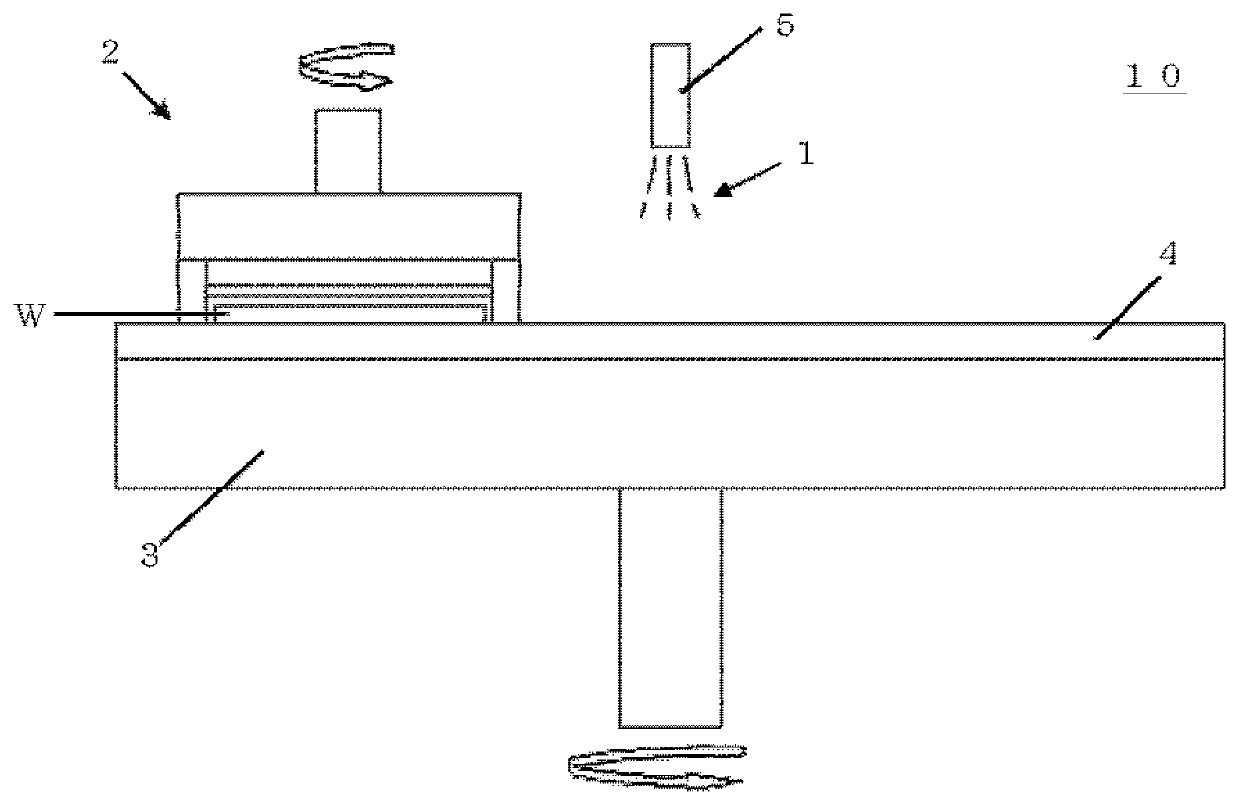Polishing agent for synthetic quartz glass substrate and method for polishing synthetic quartz glass substrate
a technology of synthetic quartz glass and polishing agent, which is applied in the direction of lapping machines, metal-working apparatuses, other chemical processes, etc., can solve the problems of inability to stably use, fluctuation of inability to control the particle size distribution of colloidal silica abrasives, so as to achieve sufficient polishing rate, reduce the effect of defect generation and sufficient inhibition of defect generation
- Summary
- Abstract
- Description
- Claims
- Application Information
AI Technical Summary
Benefits of technology
Problems solved by technology
Method used
Image
Examples
example 1
[0060]First, 500 g of the wet ceria particles synthesized above was mixed with 5 g of sodium polyphosphate (available from Wako Pure Chemical Industries, Ltd.) and 5000 g of pure water and ultrasonically dispersed for 60 minutes under stirring. Thereafter, the mixed solution was filtered through a filter having 0.5-μm holes and diluted with pure water to prepare a polishing agent for a synthetic quartz glass substrate containing 10 mass % wet ceria particles and 0.1 mass % sodium polyphosphate.
[0061]The obtained polishing agent for a synthetic quartz glass substrate had pH of 5.5. Moreover, when the particle size distribution was measured by an ultrasonic attenuation particle size analyzer (Zeta-APS, manufactured by Matec Applied Sciences Inc.), the average particle size was 0.10 μm (=100 nm).
example 2
[0062]A polishing agent was prepared by the same procedure as in Example 1 except that sodium metaphosphate (available from KANTO Chemical Co., Inc.) was added instead of the sodium polyphosphate.
[0063]The obtained polishing agent had pH of 5.3. Moreover, when the particle size distribution was measured by the ultrasonic attenuation particle size analyzer as in Example 1, the average particle size was 0.11 μm (=110 nm).
example 3
[0064]A polishing agent was prepared by the same procedure as in Example 1 except that sodium tungstate (available from Wako Pure Chemical Industries, Ltd.) was added instead of the sodium polyphosphate.
[0065]The obtained polishing agent had pH of 5.6. Moreover, when the particle size distribution was measured by the ultrasonic attenuation particle size analyzer as in Example 1, the average particle size was 0.10 μm (=100 nm).
PUM
| Property | Measurement | Unit |
|---|---|---|
| pH | aaaaa | aaaaa |
| average primary particle size | aaaaa | aaaaa |
| particle size | aaaaa | aaaaa |
Abstract
Description
Claims
Application Information
 Login to View More
Login to View More - R&D
- Intellectual Property
- Life Sciences
- Materials
- Tech Scout
- Unparalleled Data Quality
- Higher Quality Content
- 60% Fewer Hallucinations
Browse by: Latest US Patents, China's latest patents, Technical Efficacy Thesaurus, Application Domain, Technology Topic, Popular Technical Reports.
© 2025 PatSnap. All rights reserved.Legal|Privacy policy|Modern Slavery Act Transparency Statement|Sitemap|About US| Contact US: help@patsnap.com

